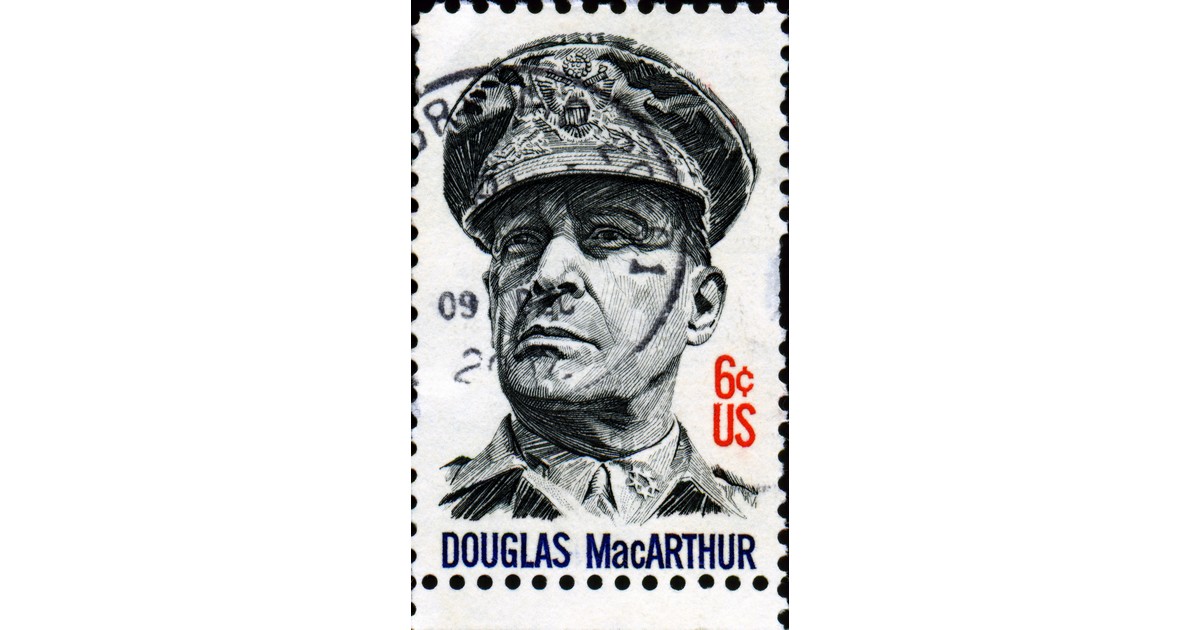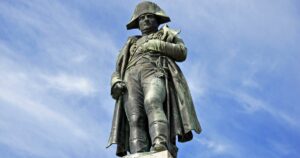During World War II, General Douglas MacArthur was on the Philippine island of Corregidor helping to defend that country from invasion by the Empire of Japan. Fearing that Corregidor would fall and MacArthur would be taken prisoner, President Franklin Roosevelt ordered MacArthur to go to Australia.
MacArthur balked from February 20 to March 11. He argued that help could make it through the Japanese blockade, and save the Philippine people from enslavement. A submarine was provided for MacArthur’s escape, but he wanted to show that there was a way out. By showing that there was a way out, he would be showing that there was a way back, a way of salvation for the Philippine people.
MacArthur obeyed the President, but broke through the blockade with his “Bataan Gang” staff in PT boats. He set out after sunset. After two days of being bounced around on rough seas, nearly being spotted by a Japanese warship, and thought to be dead and buried under the waves of the ocean, on the third day, he reached Cagayan on Mindanao.
When MacArthur reached Melbourne, Australia, he declared, “I came through and I shall return.” MacArthur showed that there was a way out and a way back to deliver the people from slavery.
Jesus showed that there was a way out, a way back, and deliverance from slavery to sin, death, and the Devil. On the mount of transfiguration, “two men talked with Him, who were Moses and Elijah, who appeared in glory and spoke of His decease which He was about to accomplish at Jerusalem.” Luke 9:30. That word “decease” is a translation into English of the Greek word that also is translated as “exodus.” Exodus, like exit, is a way out.
Exodus for the Hebrews was a way out of bondage to Pharaoh and Egypt. This, like General MacArthur escaping through the sea, was an escape through the Red Sea. In Jerusalem, Jesus would accomplish an exodus, a way out of bondage to the Devil, the world, and the sinful human nature. He, being fully divine and fully human, would take our place, suffer death, be buried, and on the third day rise again to life. Like MacArthur, He promises to use that way out as a way back, to return for us, and deliver us into the freedom of his everlasting kingdom. People asked Jesus for a sign of who He was and how He could do all the things He was saying He would do. He answered, “No sign will be given except the sign of the prophet Jonah. For as Jonah was three days and three nights in the belly of the great fish, so will the Son of Man be three days and three nights in the heart of the earth.”
This referred to the death and burial of Jesus. From the fish’s belly, Jonah prayed, “You cast me into the deep, into the heart of the seas, and the floods surrounded me; all Your billows and Your waves passed over me.” Jonah 2:3. Nearly these same words are spoken by Messiah in Psalm when he is dead and buried for our sins. He cries, “All Your waves and billows have gone over me.” Psalm 42.7.
In passages like these, the Bible frequently uses being under water as a symbol of death and burial. Apostle Paul uses that imagery to teach Baptism. “Therefore we were buried with Him through baptism into death, that just as Christ was raised from the dead by the glory of the Father, even so we also should walk in newness of life.” Romans 6:4. In Baptism, we go under water, joining Jesus in his death and burial. Rising out of the water, we join Jesus in new life.




